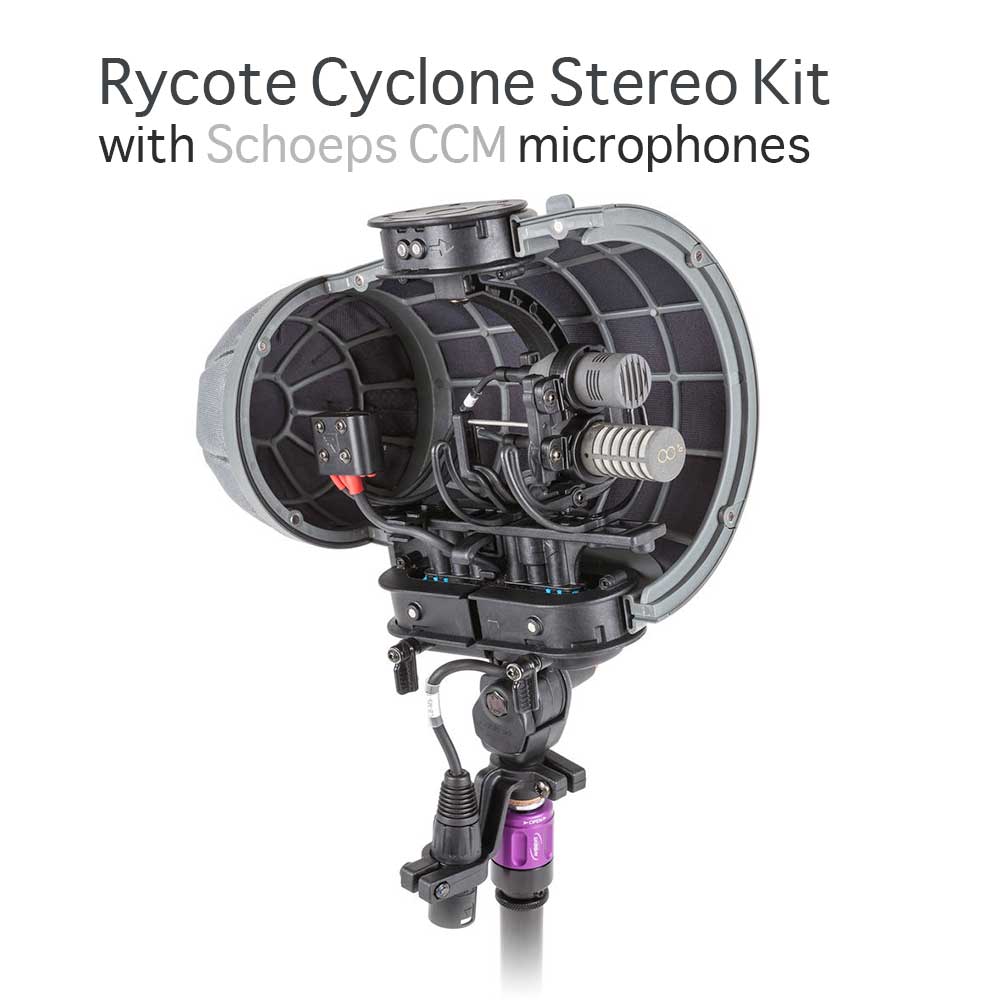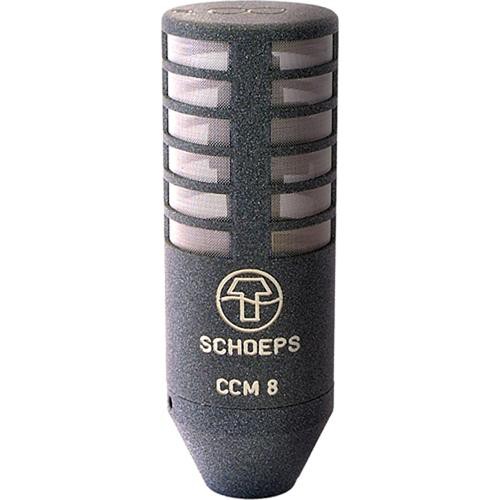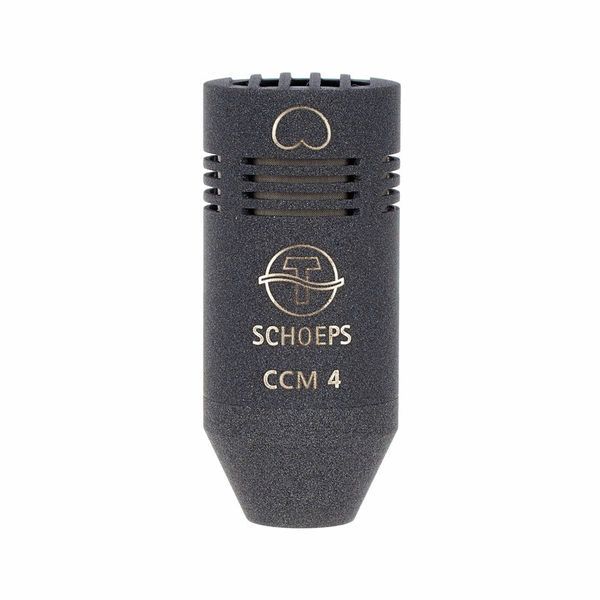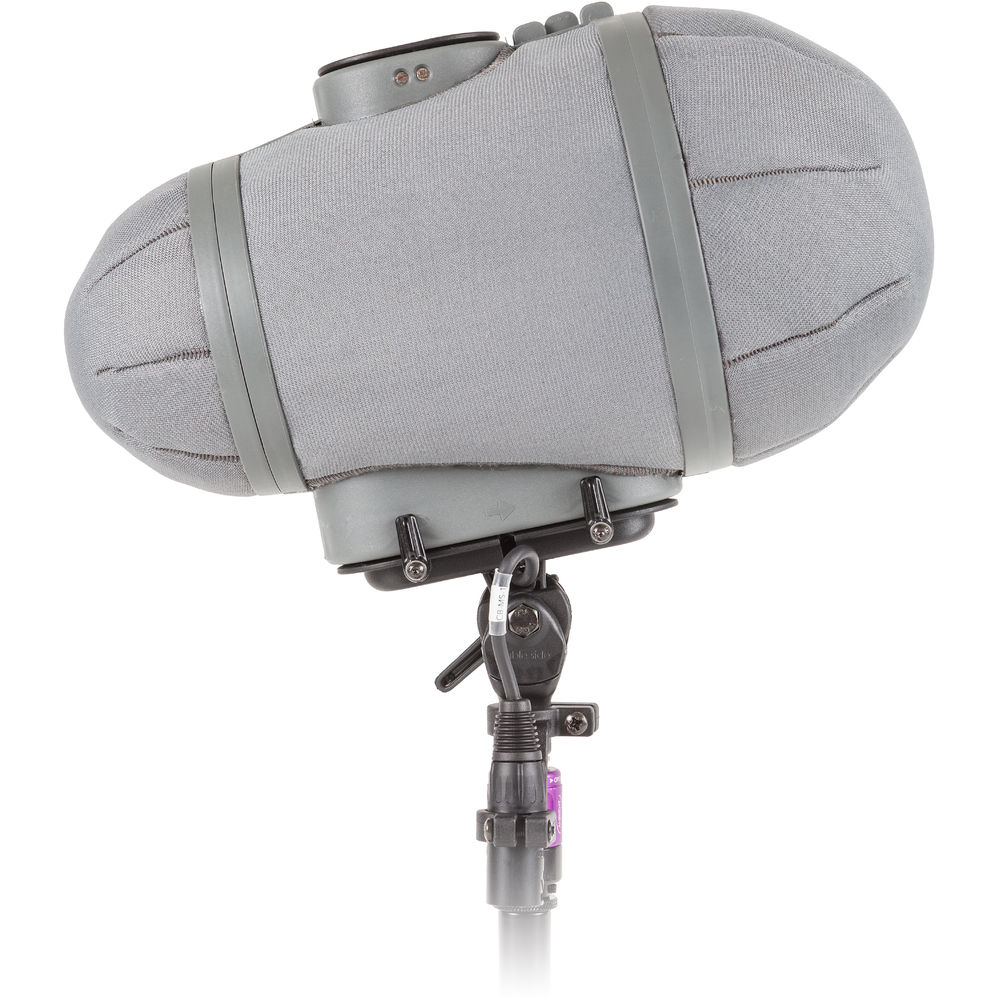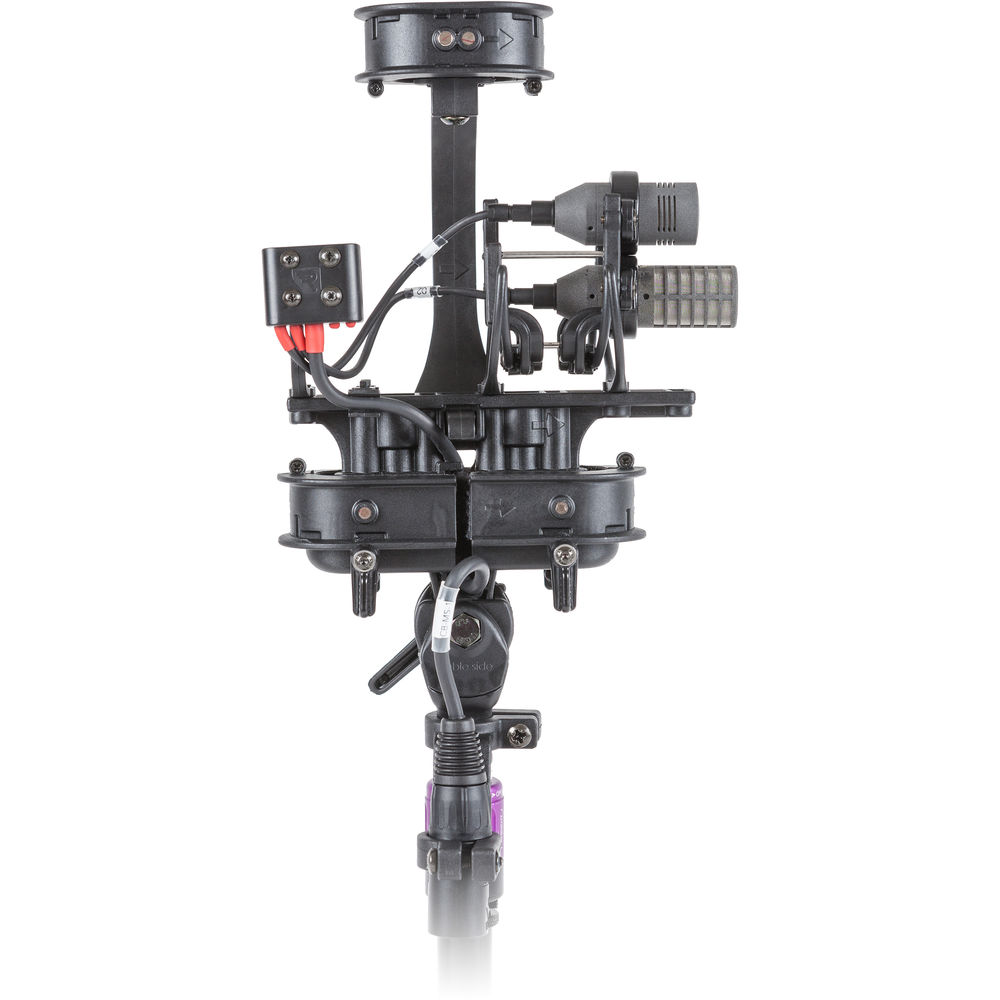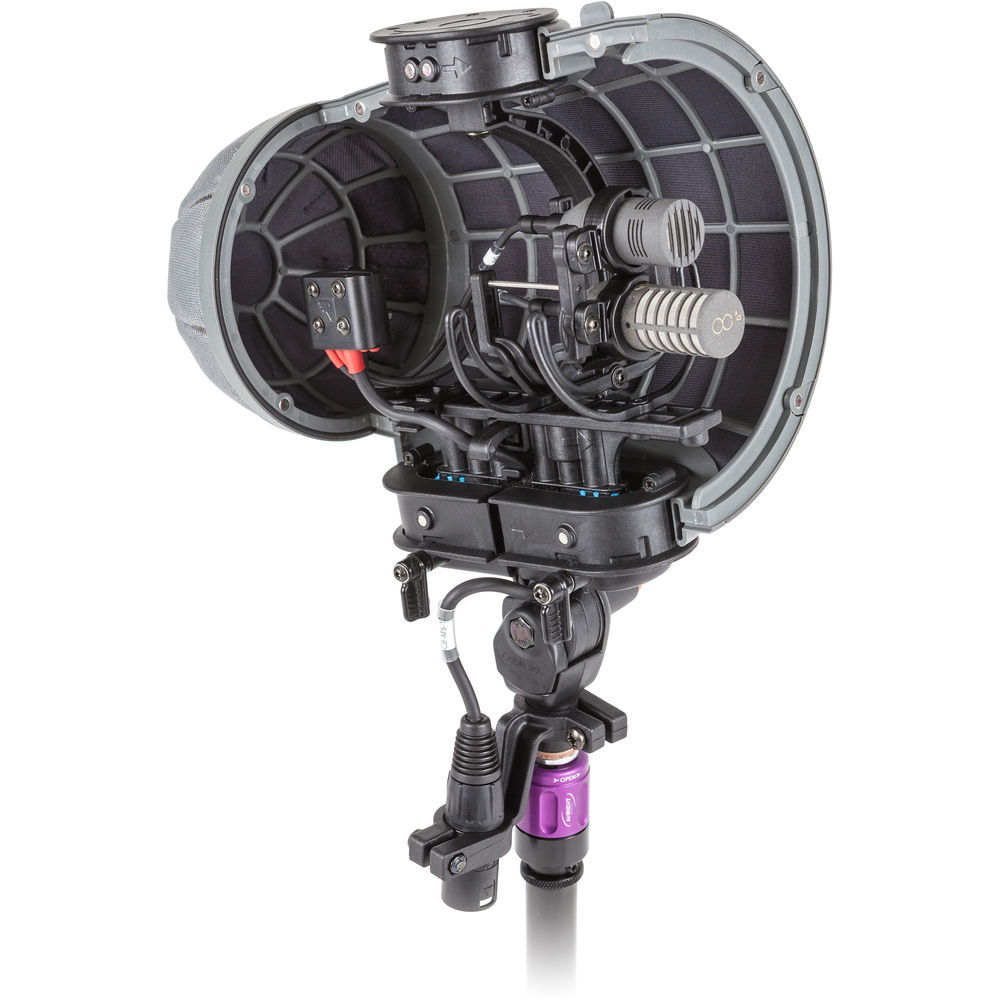Rycote Stereo Cyclone MS kit + CCM mics
- Ordered before 15:00, shipped the same day, provided products are in stock.
- Have you seen a better price? Let us know and we'll try to match it. To Price-Match Form.
- Tax free for customers outside the Netherlands (with a valid VAT number).
- Do you have a question about this product? Chat with us and we'll tell you all about it!
Schoeps CCM 4
FEATURES:
- classic cardioid
- suitable for the widest range of applications, either as a spot microphone or for stereo recording with coincident, ORTF or M/S microphone arrangements
- consistent directionality throughout its frequency range
- often preferred for singing or speaking voices and most instruments
This capsule type is a true dipole (bidirectional) transducer, operating with a single diaphragm. Its main axis is at a right angle to the capsule, and is marked at 0° and 180° with a red and a black dot respectively.
The inherent qualities of a pure pressure-gradient transducer are readily observed in this capsule type:
- its sensitivity decreases at low frequencies
- the directional characteristic is extraordinarily independent of frequency
- proximity effect is present
The directivity index of a figure-8 pattern is the same as that of a cardioid, if microphones with these two patterns are placed at the same distance from a sound source, a quantitatively similar balance of direct and reverberant sound would be picked up. In practice such a comparison would be deceptive, however, since a figure-8 does not respond to sound coming from the sides, from above or from beneath its main axis as does a cardioid. The figure-8 has a rear lobe equal in sensitivity to its front lobe, and this exactly makes up the quantitative difference - but in normally reverberant settings, the sound reaching a figure-8's rear lobe will be delayed and dispersed to a considerably greater extent than the reverberant sound energy which a cardioid picks up from its front and sides, the reflected sound will typically be subject to far more high frequency absorption as well. Thus the reverberant sound energy picked up by a figure-8, though theoretically equal in amount, is quite different in character from that which would be picked up by a cardioid in the same position.
The sound quality of the MK 8 is clear and neutral. The frequency response rolls off above 16kHz.
FEATURES:
- pure pressure-gradient transducer
- figure-8 pattern with near-ideal consistency across the frequency range
- side-addressed (pickup perpendicular to the microphone body)
- optimal for use in M/S and Blumlein stereo recording
Schoeps CCM 4
FEATURES:
- classic cardioid
- suitable for the widest range of applications, either as a spot microphone or for stereo recording with coincident, ORTF or M/S microphone arrangements
- consistent directionality throughout its frequency range
- often preferred for singing or speaking voices and most instruments
This capsule type is a true dipole (bidirectional) transducer, operating with a single diaphragm. Its main axis is at a right angle to the capsule, and is marked at 0° and 180° with a red and a black dot respectively.
The inherent qualities of a pure pressure-gradient transducer are readily observed in this capsule type:
- its sensitivity decreases at low frequencies
- the directional characteristic is extraordinarily independent of frequency
- proximity effect is present
The directivity index of a figure-8 pattern is the same as that of a cardioid, if microphones with these two patterns are placed at the same distance from a sound source, a quantitatively similar balance of direct and reverberant sound would be picked up. In practice such a comparison would be deceptive, however, since a figure-8 does not respond to sound coming from the sides, from above or from beneath its main axis as does a cardioid. The figure-8 has a rear lobe equal in sensitivity to its front lobe, and this exactly makes up the quantitative difference - but in normally reverberant settings, the sound reaching a figure-8's rear lobe will be delayed and dispersed to a considerably greater extent than the reverberant sound energy which a cardioid picks up from its front and sides, the reflected sound will typically be subject to far more high frequency absorption as well. Thus the reverberant sound energy picked up by a figure-8, though theoretically equal in amount, is quite different in character from that which would be picked up by a cardioid in the same position.
The sound quality of the MK 8 is clear and neutral. The frequency response rolls off above 16kHz.
FEATURES:
- pure pressure-gradient transducer
- figure-8 pattern with near-ideal consistency across the frequency range
- side-addressed (pickup perpendicular to the microphone body)
- optimal for use in M/S and Blumlein stereo recording


